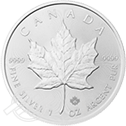Platinum vs. Palladium: Which Is the Better Investment?
Deciding between platinum and palladium can be tough.
Anyone who has bought fine jewelry can attest to the natural beauty and allure of both.
But for investors and industry, palladium and platinum serve different purposes, appeal to different types, and may achieve goals on different timelines.
We will explore the characteristics and uses of each metal and discuss their pros and cons.
What Is Palladium?
Palladium is a shiny, silver-white precious metal.
It is part of the platinum group metals, which includes platinum, palladium, rhodium, ruthenium, iridium, and osmium. All occur naturally, come from the same ore, and are primarily mined in South Africa and Russia.
According to experts, palladium is approximately 30 times rarer than gold.
Some use it to make jewelry, but its primary use is for catalytic converters in the auto industry.
Investors look to palladium for several reasons:
- Portfolio diversification
- Price speculation
- Potential store of value
We will dive deeper into those reasons a bit later.
What Is Platinum?
Platinum is also a shiny, silver-white precious metal.
It is extremely rare, and 72% of the world’s supply is mined in South Africa.
Platinum is dense, non-corrosive, stable, and ductile. One gram of platinum can be stretched into a wire over a mile long.
Platinum is a key material in catalytic converters, electrodes, electrical contacts, dentistry, pacemakers, lab equipment, thermometers, and, of course, jewelry.
Investors seeking a speculative precious metals play often turn to platinum. Timing is always crucial, and as we will see later, platinum’s potential upward movement is inviting. Platinum’s multi-industrial uses make it a fairly palatable long-term hold for many investors.
Palladium vs. Platinum: Investment Comparison
To effectively evaluate platinum vs. palladium as investing options, you must understand:
- The price of each metal.
- The industrial applications of each metal.
- The predicted trajectory of each metal.
Palladium vs. Platinum: Price
Recent history shows diverging fates when comparing the per-ounce price of palladium vs. platinum price.
Palladium was once the highflier in the primary precious metals group of gold, silver, platinum, and palladium. In March 2022, palladium reached a high of $3,440 per ounce. At that time, it was 70% more expensive than gold, which sat near $1,900 per ounce.
Since that time, however, palladium has taken a precipitous fall. It traded at just over $1,100 per ounce in late 2023.
Before 2009, platinum was more expensive than gold. In 2008, platinum peaked at about $2,300 per ounce. Between 2018 and 2023, platinum prices have fallen, fluctuating between $600 and $1,300 per ounce.
Platinum pricing has been net flat of late. October 18, 2022, saw platinum at $907 per ounce. A year later, platinum sat at $891 per ounce. Its high during that time frame was $1,138 per ounce in April 2023.
The emergence of electric cars in China and the U.S. has put downward pressure on palladium. Pure electric vehicles don’t need catalytic converters, the main industrial use of palladium.
High interest rates and geopolitical strife in the Middle East have also dampened demand for palladium.
Heavy-duty truck demand has helped buoy the price of platinum. Diesel vehicles use platinum for their converters.
Palladium vs. Platinum: How to Buy Them
Both platinum and palladium are available in coins and bars.
Direct-delivery buyers (cash buyers) simply choose the coins and/or bars they want, remit payment, and a trusted company like Advantage Gold will deliver the metals to your doorstep.
Direct-delivery is quick and simple.
Investors with an individual retirement account (IRA) or an eligible 401(k) may choose to own physical platinum and palladium tax-deferred.
You can transfer any IRA to a precious metals IRA—also known as a Gold IRA. If you are at least 59 ½ or your 401(k) is from a previous employer, you can roll it over to a Gold IRA.
Both the transfer and rollover are tax-free and penalty-free.
The precious metals IRA gives the investment option of physical assets such as IRA-eligible coins and bars made from gold, silver, platinum, and palladium.
The self-directed IRA covers the administration of the account, the safe storage of the metals, the insurance on the metals, and all applicable paperwork.
The account executives at Advantage Gold walk you through the simple application—usually in 30 minutes or less—and our award-winning IRA department handles the rest.
Palladium vs. Platinum: Applications
It is key to look at the industrial uses if you’re choosing between an investment in platinum vs. palladium.
Platinum far and away has the most uses, and that may bode better for the long-term investor.
Platinum is the only element suitable for the 600,000 to 700,000 pacemakers fitted each year. It is a great conductor, and because of its purity, platinum is unlikely to cause a reaction in the body.
Heavy-duty vehicles need platinum, not palladium, for their catalytic converters.
Platinum is in lab equipment, dental fillings, computer disks, turbine blades, spark plugs, LCD screens, and even chemotherapy drugs.
Palladium is almost exclusively used in catalytic converters.
Palladium and platinum make beautiful settings for jewelry. The metals are similar in appearance, with platinum having slightly more sheen.
Both are highly durable metals. Platinum is dent-resistant while palladium is more scratch-resistant.
Palladium vs. Platinum: Future Market Trends and Speculations
Palladium’s future in industry is unclear. Its ties to gas-powered vehicles may hinder future growth. With palladium and platinum being so similar—yet platinum being less expensive—manufacturers may devise ways to substitute platinum in its place.
Platinum uses seem to be expanding with technology. The hydrogen-powered vehicle market is emerging, and platinum plays a critical role.
Platinum seems to have a shiny, silver-white future.
Palladium is less common than platinum and therefore more likely to experience pricing volatility. As a speculative play, choose an entry point at which you feel palladium is on sale. Choose an exit point before acquiring your palladium and stay strict with your discipline.
Platinum seems to be in it for the long haul. It is hard to conceive the demand for platinum drying up. It is so useful to so many industries.
Pros and Cons of Investing in Palladium or Platinum
Every investment has its advantages and drawbacks. Ben Franklin was known to write a list of “pros and cons” when considering two choices.
Let’s touch on the pros and cons of palladium and platinum.
Investing in Palladium Advantages and Drawbacks
Pros of investing in palladium:
- The gas-powered automobile industry relies on palladium.
- Palladium bars and coins are real, tangible objects. You can hold them in your hand. Physical palladium is in a different asset class than paper-based investments and can truly diversify a portfolio.
- Palladium is rare and only mined in a few places across the globe. Prices can experience sudden increases based on supply squeezes due to geopolitical or economic events in those countries.
Cons of palladium investing:
- Palladium’s main industrial use is in the auto industry, which pegs the fate of palladium to the fate of gas-powered vehicles and catalytic converters.
- Low consumer demand for palladium may result in liquidation difficulties.
- Palladium’s price volatility can be a blessing or a curse. Time your investment well.
Investing in Platinum Advantages and Drawbacks
Advantages of investing in platinum include:
- Platinum is widely used in industry. Widespread demand for the rare metal helps assure price buoyancy and potential appreciation.
- Platinum can offer a hedge against inflation, geopolitical turmoil, and economic uncertainty.
- The jewelry market demand for platinum remains high.
Some cons of an investment in platinum are:
- Platinum experiences more price volatility than gold and silver.
- Platinum is primarily mined in South Africa, and conditions in the country can affect supplies.
- Platinum may be more difficult to liquidate than gold and silver. Some cities or countries with smaller precious metals markets may not have a market for platinum. There may be a wait time to liquidate.
Should You Invest in Palladium or Platinum?
Many establish positions in both palladium and platinum.
Understand that palladium has less industrial use but is still a valuable commodity in the auto industry. The industry is changing, but large-scale change may not happen for decades.
No matter what, palladium is rare and tangible. You can hold it in your hands, and it should always have value.
Platinum use in industry seems to be ever-expanding. Its reputation for conducting clean energy, along with its durability, and non-corrosiveness make it perfect for use in a tech-heavy world.
Platinum is rare. As its uses expand, mining production may not be able to keep up. Supply deficits could drive the price higher in the future.
Account executives at Advantage Gold are happy to discuss your palladium and platinum options.
Whether you prefer direct-delivery or the precious metals IRA, we help you with acquiring investment-grade precious metals.
Simply click the link, and let us know how to contact you, or call us today and we’ll be happy to help.
Tags: palladium vs platinum investment, palladium vs platinum price


